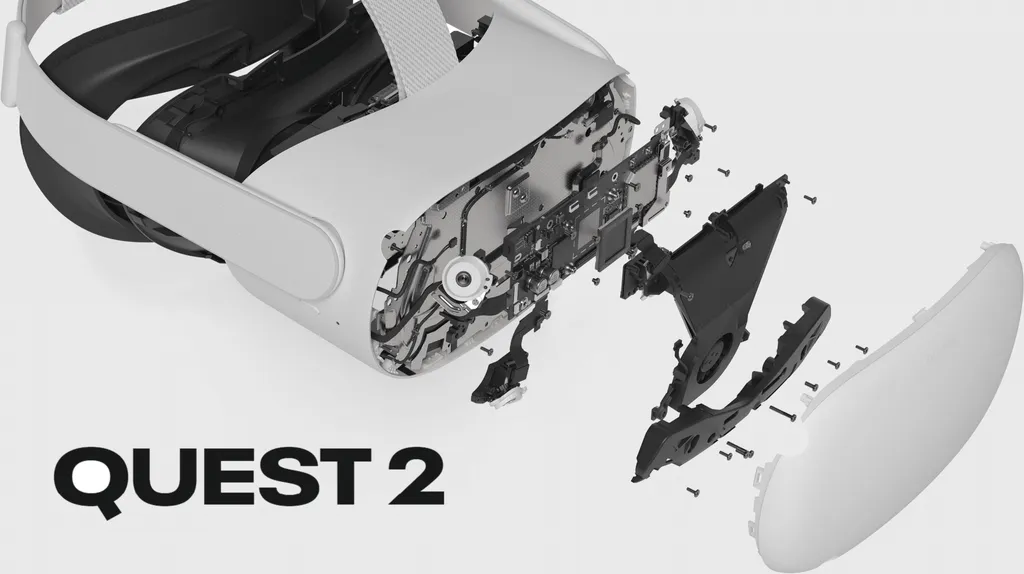Oculus Quest 2 is the hottest thing in VR right now- the most powerful standalone VR headset you can buy. But just how powerful is it? Can it compare to a PlayStation or PC?
Gaming PC and consoles use your essentially-unlimited mains power and tend to have a powerful cooling system involving multiple large fans. They draw hundreds of watts to achieve maximum performance.
Quest 2 uses the Qualcomm Snapdragon XR2 chipset, which is a variant of the Snapdragon 865 chip used in high end smartphones like Samsung’s Galaxy S20 Ultra.
Mobile chips have to make sensible use of the onboard battery, and there’s much less space for the cooling system. They’re designed for efficiency as much as performance- typically only drawing around 5 watts.
Despite these limitations, the massive investment in R&D on mobile chips over the past decade, driven by the huge smartphone & tablet industry, means Quest 2’s Snapdragon XR2 holds up surprisingly well.
CPU
The CPU (central processing unit) is the general computing component. It executes the code and sends rendering instructions to the GPU. In games, the CPU is mainly taxed by physics and AI calculations.
| Headset | Process Node | “Gold” Cores | “Silver” Cores | Cache |
| Oculus Go | 14 nm | 2x 2.3 GHz | 2x 1.6 GHz | 2 MB L2 |
| Oculus Quest | 10 nm | 3x 2.3 GHz | 4x 1.9 GHz | 3 MB L2 |
| Oculus Quest 2 | 7 nm | 3x 1.5 GHz | 4x 1.9 GHz | 1.8 MB L2 + 4 MB L3 |
Quest 2’s CPU is clocked significantly lower than what it’s theoretically capable of. It also has a new ‘Prime’ core, but it’s clocked even lower.
CPUs in mobile chips, like Qualcomm’s, actually use a different Instruction Set Architecture (ISA) to the Intel & AMD CPUs used in PCs. Mobile chips use ARM, while PC chips use x86. That means direct comparison is tricky.
Luckily, benchmarking tool GeekBench 5 is specifically designed for such cross-architecture comparisons. We sideloaded the tool onto Go, Quest 1 and Quest 2 to see how they stack up. We’ve added the score of the Intel CPU listed on the Half-Life: Alyx Steam store page for comparison:
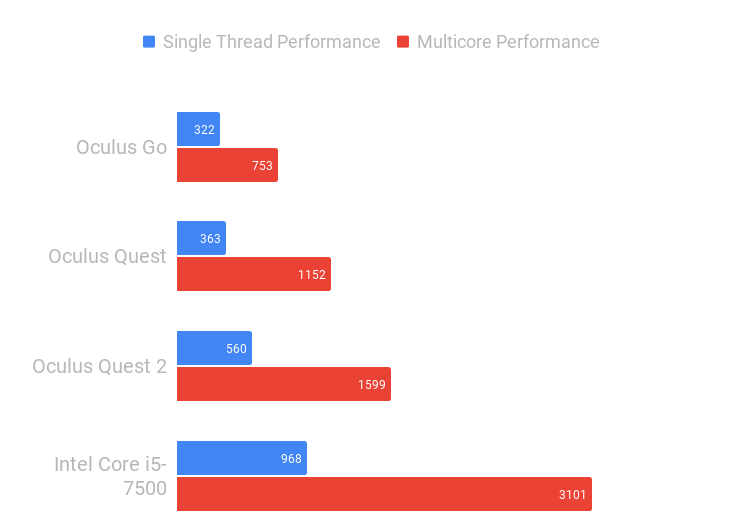
To benchmark as accurately as possible, we used ADB commands to use the highest CPU clock rate available (Level 4) and disabled Guardian. We used a sideloaded completely blank Oculus Home environment.
Quest 2’s CPU makes modest gains over its predecessors, but the low clock speed means difference isn’t quite as big as the three generation leap might suggest.
There are of course newer CPUs from both Intel and AMD. If you’ve got enough money, you can get a CPU that would make the other bars here too small to reasonably compare.
GPU
The GPU (graphics processing unit) is responsible for rendering images and other graphical tasks. The GPU is the main component of a video/graphics card, so the terms are often used interchangeably.
| Headset | GPU | Process Node | ALUs | GFLOPS |
| Oculus Go | Adreno 530 | 14 nm | 256 | ~450 |
| Oculus Quest | Adreno 540 | 10 nm | 384 | ~560 |
| Oculus Quest 2 | Adreno 650 | 7 nm | 1024 | ~1250 |
From the specification sheet alone it’s apparent that Quest 2’s GPU is a significant upgrade- much more so than the CPU. In fact, it’s the first standalone VR headset to cross the 1 TFLOP mark, bringing it into the same performance territory as the original Xbox One.
Or put another way, Oculus Quest 2’s GPU is (on paper at least) twice as powerful as the Nintendo Switch’s. Both are priced at $299.
Or course, a Switch can render at 720p 30FPS and still produce an acceptable experience. Quest 2’s default render resolution is twice as many pixels per eye, and the minimum FPS for games is 72. So please don’t expect The Witcher 3 in mobile VR.
But does that performance show through in actual use? To benchmark GPUs across platforms we are using GFXBench Aztec Ruins. Like GeekBench for CPUs, GFXBench is designed to take into account architecture differences.

Our results suggest Quest 2’s GPU is indeed an enormous upgrade. The system runs at a higher default resolution than Quest 1, and can support 90Hz mode with 25% more frames per second. Yet some VR developers have already gone further than this, adding new textures, shaders, clutter geometry, and effects for Quest 2 owners.
However, comparing to the graphics cards listed on the Half-Life: Alyx Steam store page, Quest 2’s graphical capabilities are a lot less impressive:
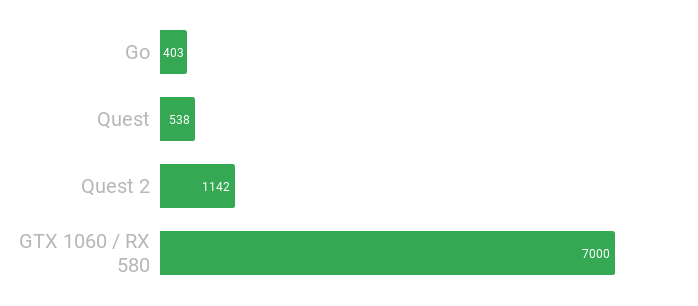
Standalone VR is making huge strides in graphical horsepower, but it still has a long way to go to match even 2016’s PC hardware (nevermind 2020’s).
RAM
RAM (random access memory) is where a computer temporarily stores assets and data currently in use. It is significantly faster than the main storage.
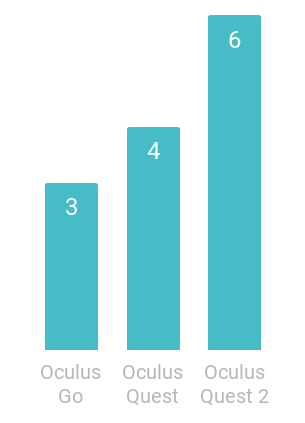
More RAM allows for larger environments and less loading or hitching when transitioning between areas – though this is also related to storage speed.
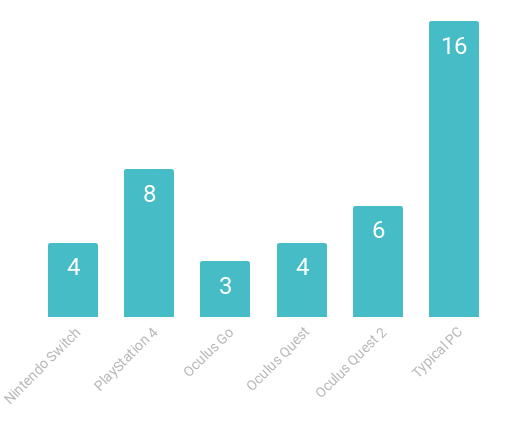
Quest 2’s 6GB of RAM could be the key to supporting AAA-scale open worlds in future.
Keep in mind that on all systems, some memory is taken by the operating system and background processes. And as commenter Kontis points out, PC GPUs also have gigabytes of even faster video memory (VRAM) to work with.

